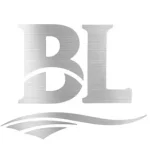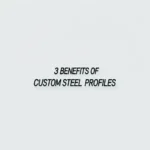Equivalents of Stainless Steel 304L
Stainless steel grades are often defined by different standards organizations around the world. While the designations might vary, they often refer to materials with very similar chemical compositions and mechanical properties. Finding the equivalents of stainless steel 304L is important for global sourcing, engineering specifications, and ensuring material compatibility across different regions and industries.


The most common designation, 304L, originates from the American Iron and Steel Institute (AISI) and is now maintained by SAE International and ASTM International (often referenced as ASTM A240 or A276 Grade 304L). The Unified Numbering System (UNS) provides a more specific designation, UNS S30403, which precisely identifies this low-carbon grade.
Other major international standards have their own designations for materials that are chemically and functionally equivalent to 304L stainless steel. Here are some of the key equivalents:
| Standard System | Designation / Number | Notes |
|---|---|---|
| UNS (Unified Numbering System) | S30403 | Primary designation in North America, highly specific. |
| AISI / SAE / ASTM | 304L | The most common industry name, widely recognized. |
| EN (European Norm) / DIN (German) | 1.4307 | European numerical designation. Commonly used in Europe. |
| EN (European Norm) | X2CrNi18-9 | European chemical symbol designation. |
| BS (British Standard) | 304S11 (Obsolete, often replaced by EN) | Older British standard designation. Might still be found on older drawings. |
| JIS (Japanese Industrial Standard) | SUS 304L | Japanese standard designation, widely used in Asia. |
| ISO (International Organization for Standardization) | X2CrNi19-11 (May also align with 1.4306) | ISO standard aims for global harmonization; composition might slightly vary. Note: 1.4306 is another closely related low-carbon grade (sometimes called 304L variant). |
It’s crucial to note that while these grades are considered “equivalent,” there might be minor variations in the specified ranges for chemical composition or required mechanical properties according to each specific standard. For critical applications, engineers should always refer to the exact material specification document for the relevant standard (e.g., ASTM A240 for plate/sheet/strip, EN 10088-2 for sheet/plate/strip) to ensure the material meets all necessary requirements. However, for general purposes, UNS S30403, EN 1.4307, and JIS SUS 304L are the most direct and widely accepted equivalents for stainless steel 304L.
What is the equivalent of stainless steel 304L? — This article provides a practical buyer‑focused overview with specifications, selection tips, and on‑site considerations. Explore related topics: blog.
Key Specifications and Standards
- Standards: ASTM / EN / JIS (e.g., ASTM A240/A36, EN 10088/10025, JIS G4304/G3131).
- Surface options: 2B, BA, No.4, HL, mirror; galvanized (electro / hot‑dip).
- Processing: hot‑rolled, cold‑rolled, annealed & pickled, welded or seamless.
- Typical services: slitting, shearing, cut‑to‑length, drilling, beveling, deburring.
- Documentation: MTC, CO, packing list with net/gross weight and heat numbers.
Typical Applications
Construction, machinery, automotive, energy, enclosures and fencing, food equipment (for stainless), and general fabrication. Match grade and finish to corrosion, strength, and appearance requirements.
Selection Guide
- Use certified material with Mill Test Certificate (MTC).
- Confirm standards (ASTM/EN/JIS) and tolerances per drawing.
- Match surface finish to application (2B/BA/No.4/galvanized).
- Specify dimensions and acceptable deviation upfront.
- Plan packaging and corrosion protection for transit.
Processing, Packaging and Logistics
We adopt edge protection, waterproof wrapping, rust‑inhibiting paper, fumigated pallets, and strapping suitable for sea freight. Loading photos and weight lists are provided for each shipment.
FAQs
Q: What lead time can I expect?
A: Typically 7–15 days ex‑works for standard sizes; custom processing may extend the schedule.
Q: Can you provide cut‑to‑size service?
A: Yes. We slit, shear, cut, drill, bevel and deburr to drawing to reduce waste and speed installation.
Q: How do you ensure quality?
A: Incoming inspection, process control, and final inspection with traceable heat numbers; third‑party inspection is available.
Q: Do you support small trial orders?
A: We support pilot quantities with consolidated shipping to control cost.
All values are typical and for guidance only; confirm with the datasheet and purchase order before production.
Related products: view details.
Related products: view details.





